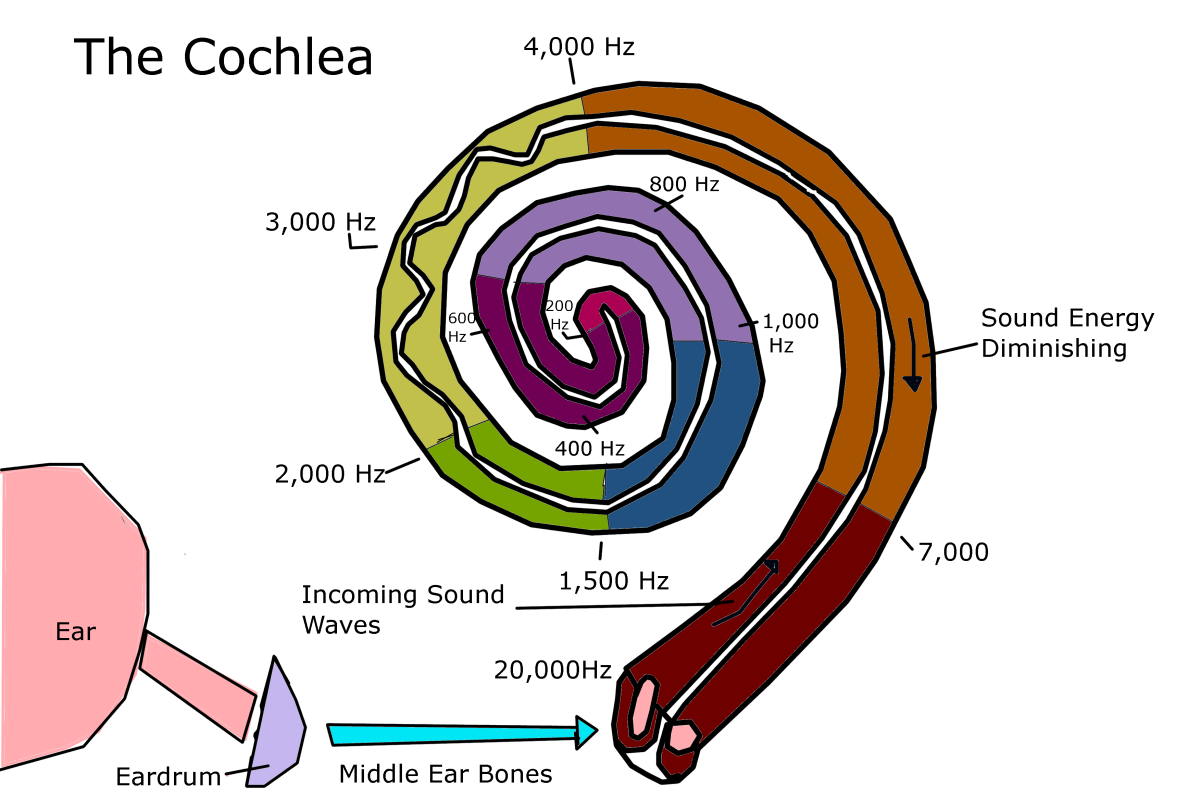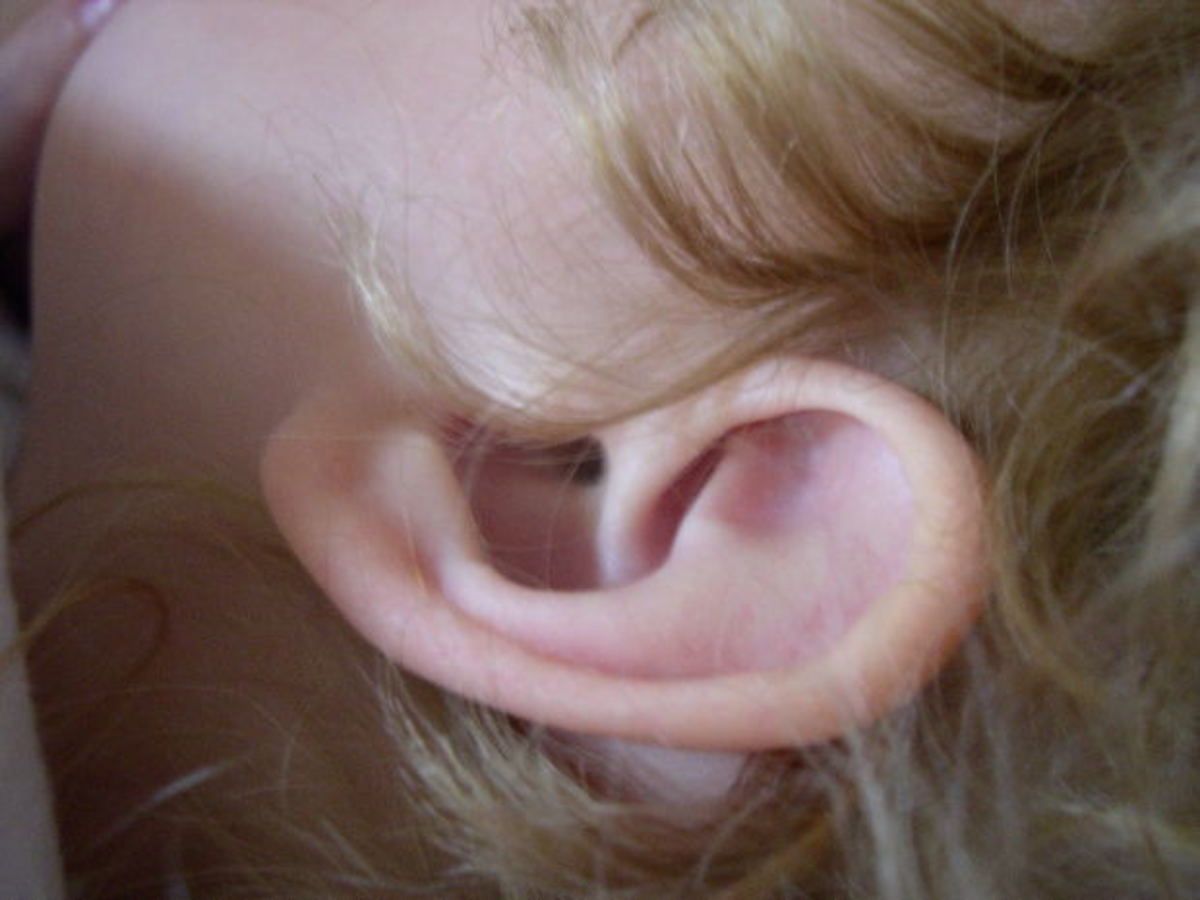Conductive Hearing Loss Causes and Treatment
The Middle Ear Bones
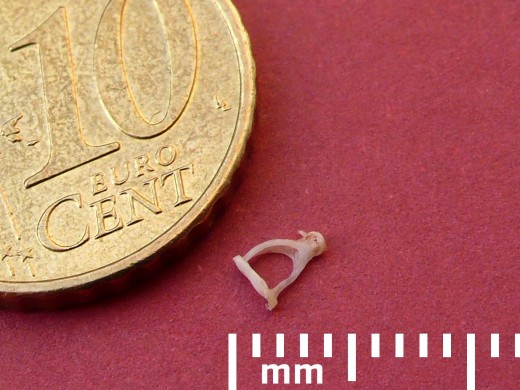
Types of Hearing Loss
There are several reasons a hearing loss may occur. The type of deafness depends on which area of the ear and/or auditory nerves are affected.
A conductive hearing loss occurs when the physical transmission of sound is impeded. The sound waves cannot get to the cochlea (and thus the auditory nerve), so sound is difficult to perceive. The cochlea (hearing organ) and auditory nerves are not damaged.
A sensorineural hearing loss occurs when the delicate hair cells of the cochlea are damaged or missing, causing a hearing loss that may range from mild to profound. This type of hearing loss is generally permanent, but may be treated with hearing aids or cochlear implants (dependent on the severity of the hearing loss).
A mixed hearing loss happens when a person has both a sensorineural and conductive hearing loss.
Auditory neuropathy spectrum disorder (ANSD) happens when the auditory nerve does not send synchronous signals to the brain. The physical transmission of sound and the cochlea are healthy, but the auditory nerve cannot effectively relay information to the brain.
Conductive Hearing Loss Audiogram
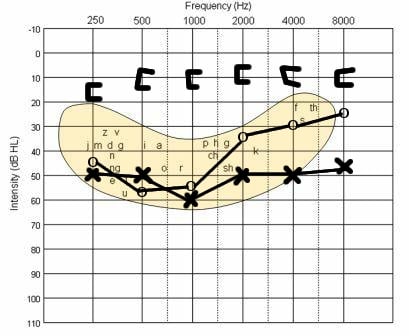
What is a Conductive Hearing Loss?
When sound waves cannot be transmitted through the outer and middle ear space, a conductive hearing loss is diagnosed. Most causes of conductive hearing loss are treatable, but some people have a permanent condition and will require the use of hearing aids.
The ear is a very complicated sensory organ. Sound is first collected by the outer ear. The sound then travels down the ear canal, and causes the eardrum (tympanic membrane) to start vibrating. The three smallest bones in your body lie just behind the eardrum in an air-filled space– the incus, malleus, and stapes. These three bones conduct sound to the oval window of the cochlea. The cochlea is filled with fluid, so the sound must be coupled from transmission in air to transmission in fluid. The stapes bone directly connects with the oval window, where sounds are amplified more than twenty times what they were when they first struck the tympanic membrane.
A conductive hearing loss occurs when any part of the sound transmission process is interrupted. A problem with the outer ear, ear canal, eardrum, middle ear space, or the middle ear bones may cause a conductive hearing loss.
The actual hearing organ of the cochlea and the auditory nerves are completely unaffected in a purely conductive hearing loss.
Causes of Conductive Hearing Loss
Cause
| What is It?
| Treatment Options
|
|---|---|---|
Ear Wax
| Cerumen, or ear wax, collects in the ear canal. This may block the transmission of sound.
| Earwax removal.
|
Middle Ear Fluid
| Fluid collects in the middle ear space as part of an acute or chronic middle ear infection. This is also known as "glue ear." Sound does not travel effeciently because the bones may not move freely.
| Antibiotics and/or placement of ventilation tubes.
|
Microtia/Atresia
| A small or missing external ear (microtia) and/or a small or missing external ear canal (atresia)
| Surgery or the use of a bone conduction hearing aid.
|
Tympanic Dysfunction
| A stiff, floppy, or perforated eardrum.
| In severe cases, a tympanoplasty (eardrum replacement) may be performed.
|
Ossicular Dysfunction
| The middle ear bones are malformed or stiff.
| Surgery to replace the affected bones.
|
Otosclerosis
| Mineralization of the stapes, which causes it to become fixed.
| Surgery to replace or improve the function of the stapes bone, or hearing aids.
|
Cholesteatoma
| A cyst-like growth of skin tissue which forms a mass behind the eardrum.
| Surgery to remove the cholesteatoma and replacement of the damaged middle ear bones. Continued monitoring is necessary.
|
Conductive Hearing Loss Video Explanation
Conductive Hearing Loss Signs and Symptoms
The symptoms of a conductive hearing loss vary with the cause. If the cause is due to atresia, a very narrow (or occluded) ear canal may be observed. Heavy amounts of earwax may be seen with an otoscope in some cases of minor conductive hearing loss. Blood or fluid leaking from the ear may be seen with a tympanic membrane perforation.
Many times, however, there is no visible sign of hearing loss. The following may be encountered:
Ø Feeling as if one is hearing “underwater.” Speech sounds muffled.
Ø Difficulty with clarity: a person may be able to detect, but not understand, speech.
Ø Turning up the television or radio volume on a consistent basis.
Ø A child may not consistently turn to their name when called, particularly if the sound originates behind them.
Middle Ear Ventilation Tubes
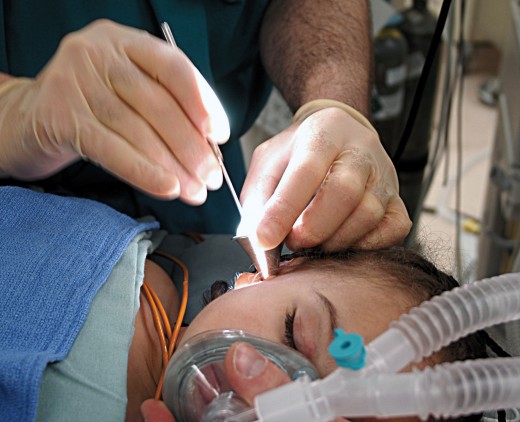
Treatments for Conductive Hearing Loss
Most forms of conductive hearing loss are curable through surgery or medication. If a foreign body or earwax is responsible for the problem, the obstruction is simply removed and hearing is restored to a normal state. Fluid in the middle ear (chronic otitis media) may be treated with antibiotics or with the insertion of middle ear ventilation tubes (pressure equalization tubes) to allow the fluid to drain. This generally restores hearing.
Sometimes, the middle ear bones are misshapen or missing, or a person has otosclerosis. In this case, surgery may be required to replace the middle ear bones with prostheses (see “ear surgery for hearing loss,” below).
Occasionally, conductive hearing loss may be a permanent condition and requires treatment with hearing aids.
The Baha (Bone Anchored) Hearing Aid
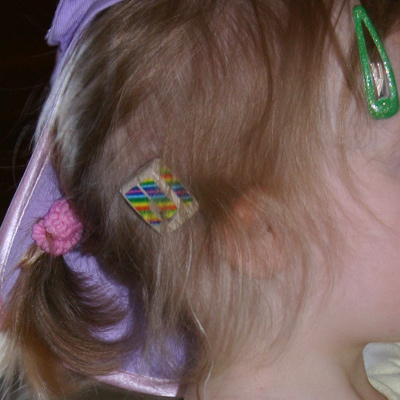
Bone Anchored Hearing Aids
In some cases, the conductive hearing loss cannot be treated through surgery or medication. In this case, hearing aids will be required. For a purely conductive loss, bone anchored hearing aids offer the best sound clarity. These devices transmit sound through the the bones of the skull, avoiding the use of the middle ear. The sound is carried through the bones directly to the cochlea, where sound may be perceived in a clear, bright fashion. Bone anchored hearing aid systems (such as the Baha by Cochlear or the Ponto by Oticon) may be worn on a headband or may be directly implanted. The headband system is generally used by children too young for implantation. Adults may try a bone anchored system on a headband first, and decide if they would like the implant. A small fitting is implanted into the mastoid bone and the hearing aid snaps onto the fitting (once the area has healed).
Microtia and Atresia Picture
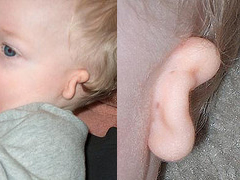
Causes of Conductive Hearing Loss: A Poll
What is the cause of your (or your child's) conductive hearing loss?
Ear Surgery for Hearing Loss
The most common surgery for a conductive hearing loss is the placement of tympanostomy tubes (middle ear ventilation tubes or grommets). This short surgical procedure places tiny tubes into the eardrum, allowing fluid to drain into the Eustachian tubes. A hearing test should be performed after this procedure to verify hearing has returned to normal limits.
A stapedectomy is a procedure performed when the stapes bone is no longer able to move freely. A fixed stapes may be caused by otosclerosis or by a congenital malformation of the bone. The stapes bone is removed and a small prosthetic is placed. There is a small risk (1%) of deafness occurring from this procedure, so typically only one ear is operated on at a time.
A stapedotomy is a similar procedure to a stapedectomy, except the stapes is not removed. A tiny hole is drilled into the fixed stapes and a prosthetic that acts like a piston is surgically attached. 90% of patients will have improved hearing after this procedure. Stapedotomy is safer than stapedectomy, as the risk of leaking fluid from the cochlea (perilymph fistula) is greatly reduced.
Ossiculoplasty is the replacement of malfunctioning middle ear bones with titanium prostheses.
Mastoidectomy is performed for patients with cholesteatoma. The entire cholesteatoma must be removed and a “safe ear” created. The middle ear may be reconstructed with the use of prosthetic middle ear bones or a bone anchored hearing aid may be required to restore hearing to the damaged ear.
Microtia surgery is generally required for children who have microtia and atresia. Children with small or missing external ears often have a small or obstructed ear canal and may also have problems with the middle ear bones. A severe conductive hearing loss (40-60dB) may result. Plastic surgery is used to create an external ear and atresia surgery creates or widens the ear canal. Ossiculoplasty may be required to replace the middle ear bones. A bone anchored hearing aid may be used until surgery can be performed. In cases where surgery is not advised, a bone anchored hearing aid may be the treatment of choice.

